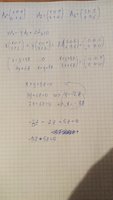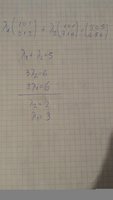obelisk1151
New member
- Joined
- Nov 14, 2019
- Messages
- 17

Unfortunately its on german and my english ins't that good so i've translated it over google translate:
Given are the 2 × 3 matrices A1 = (1 0 1 0 1 2), A2 = (1 0 1 3 1 0),A3 = (5 0 5 6 5 6).
(a) Are these matrices of R2 × 3 linearly dependent? If yes, represent A3 as a linear combination of the other two.
(b) Does the span of the matrices {A1, A2, A3} form a subspace of R2 × 3? If so, what is the dimension of this subspace?
(c) What is the dimension of the R-vector space R2 × 3? Enter a base.
(d) Which dimension has the R-vector space C2 × 3? Enter a base.
I have already done the (a) part, but i don't know how do to the rest, pls someone help me.



